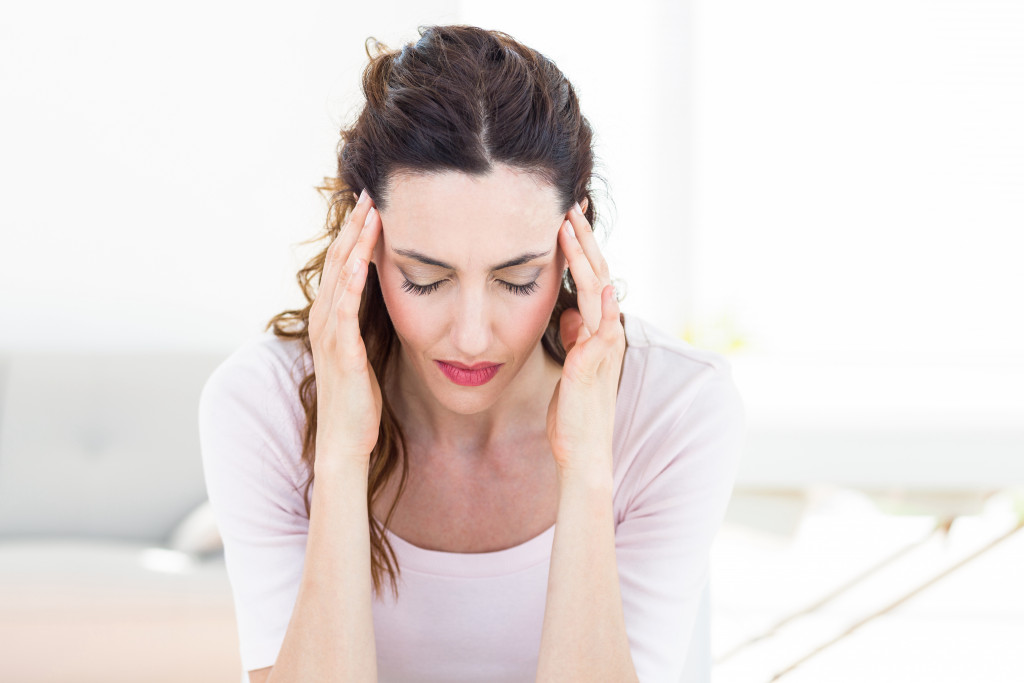Regular migraines are usually caused by dehydration, hunger, and stress. Other well-known triggers include stress, lack of sleep, and hormonal changes. In some cases, medication can also trigger a migraine attack.
However, other factors may seem unlikely to trigger a migraine, and you’ll be surprised at how common they are. Below are three of the unexpected migraine triggers that can drain you of energy throughout the day.
Dental Health
Your migraine can be triggered by problems that reside in your mouth, particularly in your jaw area. If you struggle with chronic headaches and can’t seem to pinpoint the cause, it can be a case of a temporomandibular joint (TMJ) disorder. TMJ specialists from clinics like Walden Dental can ease your pain with non-aggressive treatments.
The TMJ is part of your facial structure that connects the lower jawbone to the skull’s side base, which is the temporal bone. These joints slide and rotate, allowing you to open and close your jaw when you speak, eat, and chew food.
The TMJ runs one of the most prominent nerves in the body, the trigeminal nerve. This nerve acts as the transmitter for the muscles found in the jaw and the rest of the face, including the temporal area. When this nerve gets impinged, it can lead to inflammation. Nerve impingement can also affect blood flow. When this occurs, it can trigger a migraine. Until the TMJ muscles relax, one cannot feel relief from the migraine.
One of the leading causes of muscle strain from a misaligned jaw is misaligned teeth. Addressing the dental problem is a crucial part of resolving the TMJ disorder. Once the teeth are correctly aligned, the jaw will sit in the correct position. This will prevent straining the jaw muscles, which impedes the trigeminal nerve, sending a pain signal to the brain and ultimately setting off the migraine.
Proper teeth alignment isn’t just for vanity or aesthetic purposes; it is an integral part of your overall health, which is why any form of dental issue must be addressed immediately at all times.
Hair Styling

Surprisingly, the way you wear your hair or what you put on your head can trigger migraines. Tight-fitting caps, headbands, and a tight ponytail hairdo create tension and force the sensitive nerves in the scalp. The result is a ponytail headache and turns into a migraine for those susceptible to the latter.
Often, the tension can be relieved by removing or loosening the ponytail or the cap. Using headbands may be trickier as these things are usually really tight-fitting to keep the hair in place.
The headband, which is a hair accessory, mentioned above should not be confused with the headband that is designed for migraine relief. The headband for migraine relief is secured around the head with Velcro. It is an elastic band, which allows the pressure to be adjusted around the head in varying degrees. Firm rubber discs are inserted under the band while it is wrapped around the head. This is ideal for tension headaches that lead to migraines.
Also, this form of mechanical compression is not meant to provide lasting relief; migraine relief is only felt when the headband is worn around the head. Applying pressure on a localized area on the scalp provides pain relief if the headache is due to dilated blood vessels in the scalp. This type of pressure can also occur when using clips, headbands, and wearing braids. All of which can trigger a migraine attack. The solution would be to remove the source of pressure: removing or loosening tight-fitting hair accessories.
Weather and Environment
Another surprising migraine trigger is the change in weather. Barometric pressure drops can affect the air-filled systems in the body, specifically those found in the ears and the sinuses.
People who suffer from weather migraines often experience headaches for up to four days. The pain can be mitigated by taking over-the-counter NSAIDs. In some cases, some people become more sensitive to noise and light during a migraine attack.
Unfortunately, weather-related migraines are more challenging to manage. Aside from the weather forecast, nothing else can predict the occurrence of this type of migraine headache. However, if you are in an air-conditioned space — be it a vehicle or a room — the drop in room temperature can also trigger a migraine. Thus, it’s best to increase the room temperature in small increments to allow the air-filled systems in your body, particularly those in your sinuses, to adjust to the temperature change.
No matter what your migraine trigger is, staying hydrated, having a meal, getting enough rest, and taking the right pain reliever will help a lot. But the best way to find relief from migraines is by consulting medical practitioners who can address the root cause of the problem. This includes dentists, ENTs, and neurologists. There’s no better migraine relief than permanent pain relief from the treatment most suitable for your headache triggers.

